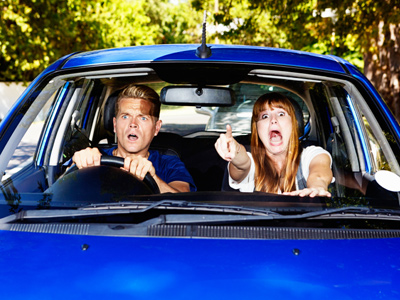Understanding braking forces is an important part of being able to drive. Knowing approximately how far it will take you to stop is not just important for yourself, but also for the safety of other road users.
Before we consider the braking force acting on a vehicle, it is necessary to understand what forces are acting on a vehicle. The driving force comes from the engine and this moves it forward. The weight is created by the force of gravity acting on the mass of the vehicle, holding it to the ground. Acting in the opposite direction to the weight is the reaction force. There are two forces acting in opposition to the driving force, the friction with the road and the air resistance. The air resistance is much greater than the friction with the road when a vehicle is in motion.
When a vehicle is at rest, all of the forces acting on it are balanced. When the driver starts the engine and engages the gears, the driving force is transferred to the drive wheels. The forces are now unbalanced and the vehicle moves forward (or backwards if reverse gear is engaged of course!!). The vehicle will then accelerate. As the vehicle gathers speed, the air resistance increases and when it is the same magnitude as the driving force, the vehicle will no longer accelerate since the forces are once again balanced. If the driver lifts their foot from the accelerator pedal, the driving force is reduced and the vehicle slows down, until the point when air resistance balances the driving force once again.
Relying on air resistance to slow a vehicle down is only OK if you want to control the speed slowly, so vehicles are equipped with braking systems. The braking force acts in opposition to the driving force and is much greater than air resistance on its own, meaning that a driver can bring their vehicle to a halt much faster.
The distance it takes to bring a car, or any other vehicle, to a halt depends on two things - the thinking distance of the driver and the braking distance. These both depend on the speed at which the vehicle is moving. If the vehicle is moving at a low speed, both are shorter but they increase significantly if a vehicle is moving with a greater speed.
It takes only a fraction of a second for a driver to react to a situation and apply the brakes but during that time period, the vehicle is still moving at speed. The faster it is moving, the further that it will travel - this is called the thinking distance and is different for every driver. For an individual driver at a specific speed, the reaction time and therefore the thinking distance increases with tiredness, if they have consumed alcoholic drinks, taken drugs or distracted e.g. by listening to loud music or talking on their mobile telephone.
Once the driver has reacted and pressed the brake pedal, the distance required for it to stop depends not just on the speed of the vehicle, but also on how hard the brakes are applied, the condition of the brakes, the condition of the tires, the weather and condition of the road surface.








